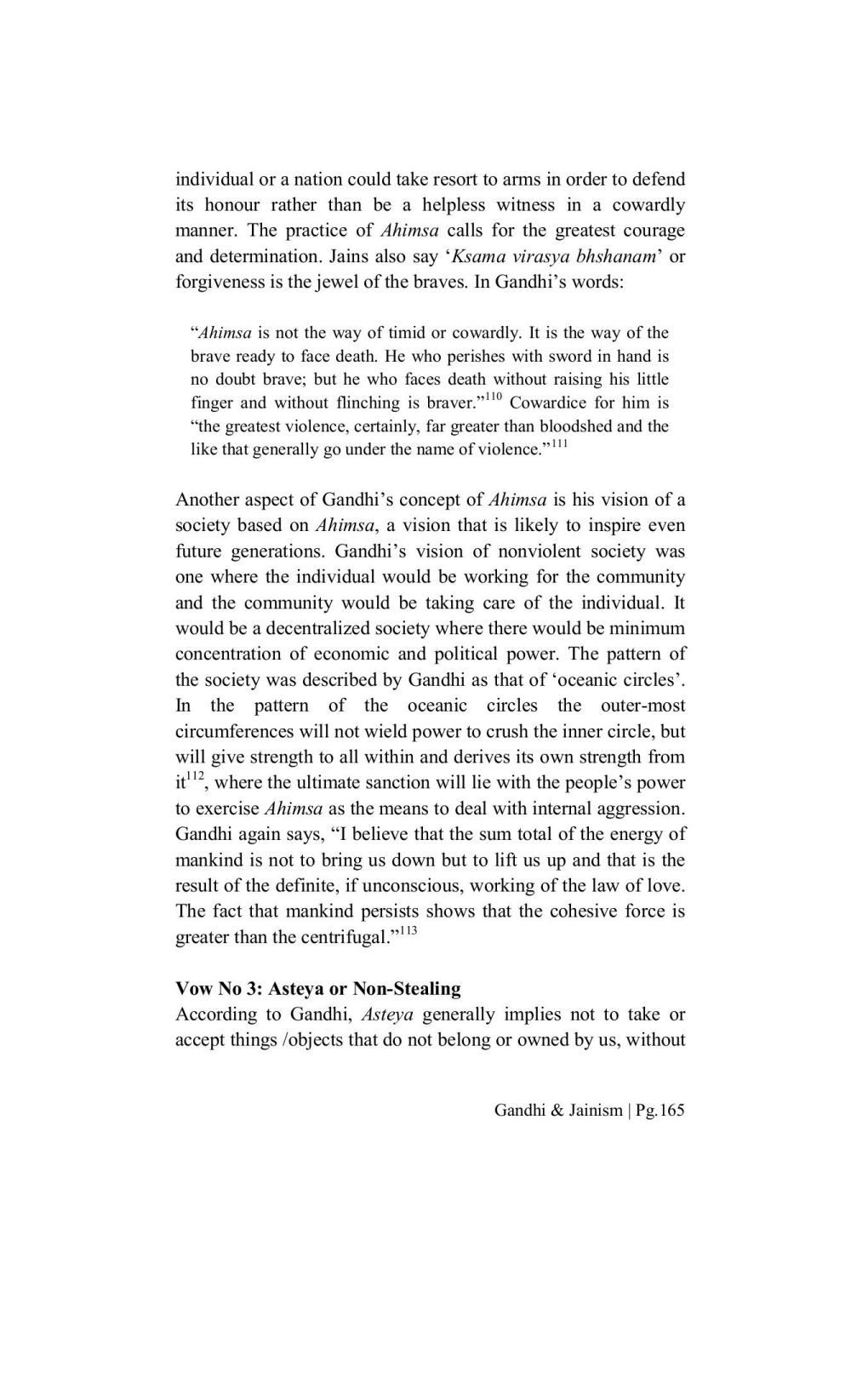________________
individual or a nation could take resort to arms in order to defend its honour rather than be a helpless witness in a cowardly manner. The practice of Ahimsa calls for the greatest courage and determination. Jains also say 'Ksama virasya bhshanam' or forgiveness is the jewel of the braves. In Gandhi's words:
"Ahimsa is not the way of timid or cowardly. It is the way of the brave ready to face death. He who perishes with sword in hand is no doubt brave; but he who faces death without raising his little finger and without flinching is braver."110 Cowardice for him is "the greatest violence, certainly, far greater than bloodshed and the like that generally go under the name of violence."
Another aspect of Gandhi's concept of Ahimsa is his vision of a society based on Ahimsa, a vision that is likely to inspire even future generations. Gandhi's vision of nonviolent society was one where the individual would be working for the community and the community would be taking care of the individual. It would be a decentralized society where there would be minimum concentration of economic and political power. The pattern of the society was described by Gandhi as that of 'oceanic circles. In the pattern of the oceanic circles the outer-most circumferences will not wield power to crush the inner circle, but will give strength to all within and derives its own strength from it', where the ultimate sanction will lie with the people's power to exercise Ahimsa as the means to deal with internal aggression. Gandhi again says, “I believe that the sum total of the energy of mankind is not to bring us down but to lift us up and that is the result of the definite, if unconscious, working of the law of love. The fact that mankind persists shows that the cohesive force is greater than the centrifugal."113
Vow No 3: Asteya or Non-Stealing According to Gandhi, Asteya generally implies not to take or accept things /objects that do not belong or owned by us, without
Gandhi & Jainism | Pg. 165




